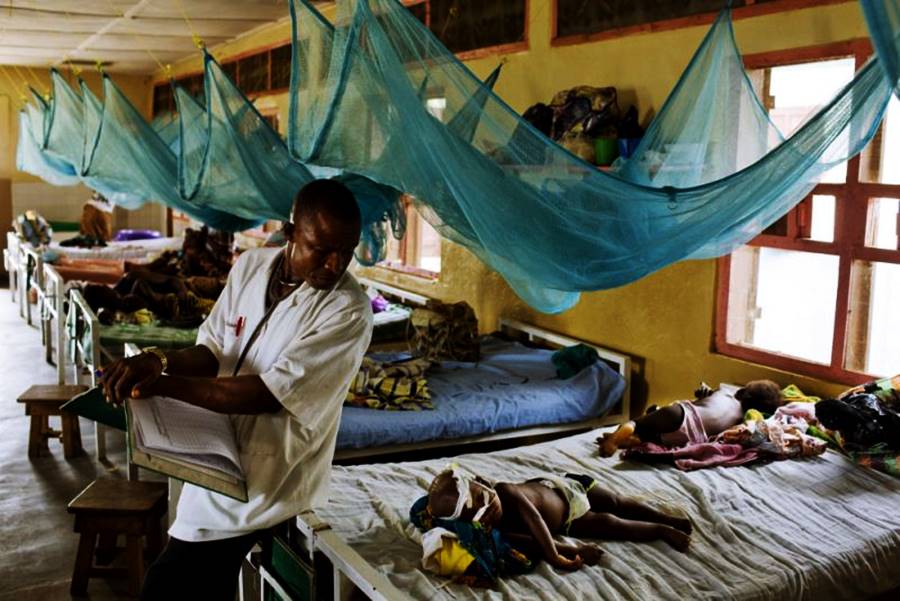Mon 24 Apr 2023:
Sub-Saharan Africa is disproportionally affected by malaria. The region accounts for 95% of the world’s malaria cases. The disease kills an African child every 60 seconds.
These figures are alarming. But malaria is preventable and treatable.
The progress made between 2000 and 2015 is proof of what can be achieved. Support from global donors helped drive down malaria deaths among children under five from 723,000 to 306,000. Most of the deaths prevented were in sub-Saharan Africa. Fifty-five of the 106 malaria-endemic countries showed a 75% decrease in new malaria cases by 2015 compared to 2000.
But in 2016, the global malaria response plateaued. In some regions it even backtracked. Malaria cases and deaths increased as national malaria control programmes competed with other health challenges.
The World Health Organization (WHO) and other partners issued urgent calls to address the challenges national programmes were facing. But the gap in funding and technical capacity widened. Malaria control efforts in Africa remained woefully off-track to meeting 2030 elimination targets.
And then the COVID-19 pandemic hit.
At the start of the pandemic, there were dire warnings of catastrophic disruptions to routine malaria services. These were expected to lead to a doubling of malaria deaths in Africa.
There were disruptions. But national malaria control programmes have shown impressive resilience over the past three years. Innovative actions saw malaria deaths increase by only 10% between 2019 and 2020. Malaria deaths didn’t double, and have remained stable in 2021.
The World Health Organization (WHO) and other partners issued urgent calls to address the challenges national programmes were facing. But the gap in funding and technical capacity widened. Malaria control efforts in Africa remained woefully off-track to meeting 2030 elimination targets.
And then the COVID-19 pandemic hit.
At the start of the pandemic, there were dire warnings of catastrophic disruptions to routine malaria services. These were expected to lead to a doubling of malaria deaths in Africa.
There were disruptions. But national malaria control programmes have shown impressive resilience over the past three years. Innovative actions saw malaria deaths increase by only 10% between 2019 and 2020. Malaria deaths didn’t double, and have remained stable in 2021.
The recent invasion and rapid spread of the Asian malaria vector, Anopheles stephensi, through the Horn of Africa and as far west as Nigeria, may be an example of this. It has been identified as a threat to malaria elimination efforts in Africa. This mosquito species is extremely difficult to control. It thrives in urban areas, bites both in and outdoors, feeds on animals and humans, and is resistant to several insecticide classes. Acutely aware of the threat that this mosquito poses to malaria control in Africa, the WHO released an initiative to slow the spread of this vector into the rest of Africa.
Not to be outdone, the malaria parasite has also thrown a few curve balls into the mix. Plasmodium falciparum is the deadliest and most prevalent human malaria parasite in Africa. It has mutated and can go undetected by the most widely used point-of-care diagnostic tool in rural malaria endemic regions. This leaves malaria-infected individuals at risk of developing severe illness, and still capable of transmitting malaria. In addition, African malaria parasites from Eritrea, Rwanda and Uganda have become resistant to the artemisinin part of ACTs. ACTs are the only class of effective antimalarial currently available. The WHO has developed a strategy for tackling emerging resistance in Africa.
Way ahead
In 2021, the WHO took the bold step of approving the use of the RTS,S malaria vaccine in high-burden countries, despite its very modest efficacy of less than 40%.
A newer version of the RTS,S vaccine, the R21 vaccine produced by Oxford University’s Jenner Institute, has shown much high efficacy in a Phase III trial. This has prompted Ghana and Nigeria to approve its use this month without pre-approval from the WHO.
Researchers are developing newer, more effective antimalarials. Others are investigating using different combinations of existing drug and antibodies to effectively treat malaria.
Newer, more effective insecticide-treated nets are being rolled out. And genomic surveillance is a new tool in the malaria elimination toolbox to assist with evidence-based decision-making.
![]()
Jaishree Raman
Principal Medical Scientist and Head of Laboratory for Antimalarial Resistance Monitoring and Malaria Operational Research, National Institute for Communicable Diseases
Jaishree Raman currently heads the Laboratory for Antimalarial Resistance Monitoring and Malaria Operational Research (ARMMOR) at the South African National Institute for Communicable Diseases. The laboratory focusing on ensuring effective diagnostics and treatment are in place thereby helping South Africa accelerate towards malaria elimination. The lab played a pivotal role is assessing the safety of single low dose primaquine in a South African setting. Their most recent publication is ‘Absence of kelch13 artemisinin resistance markers but strong selection for lumefantrine-tolerance molecular markers following 18 years of artemisinin-based combination therapy use in Mpumalanga Province, South Africa (2001–2018)’ highlights the need for regular drug efficacy monitoring.
This Article Originally published in The Conversation Click here
______________________________________________________________
FOLLOW INDEPENDENT PRESS:
TWITTER (CLICK HERE)
https://twitter.com/IpIndependent
FACEBOOK (CLICK HERE)
https://web.facebook.com/ipindependent
Think your friends would be interested? Share this story!





